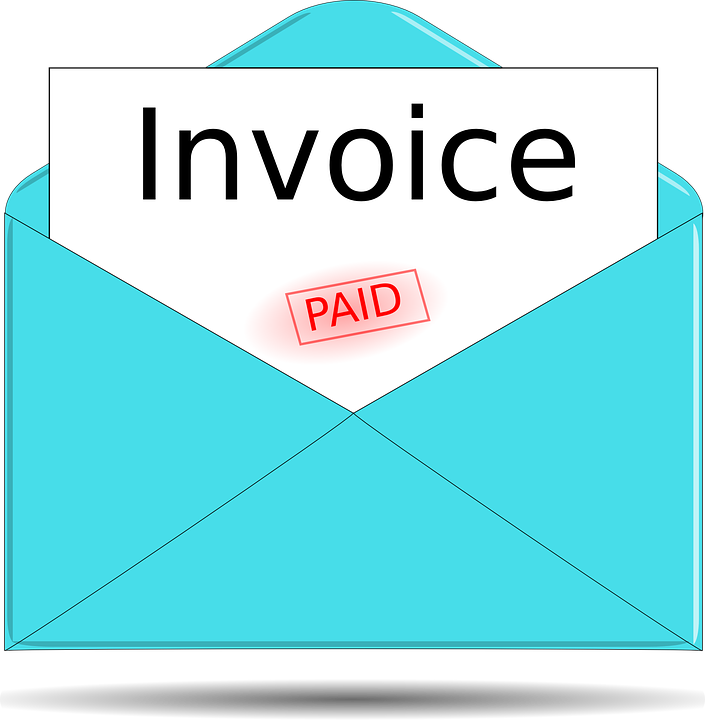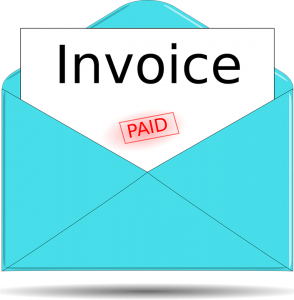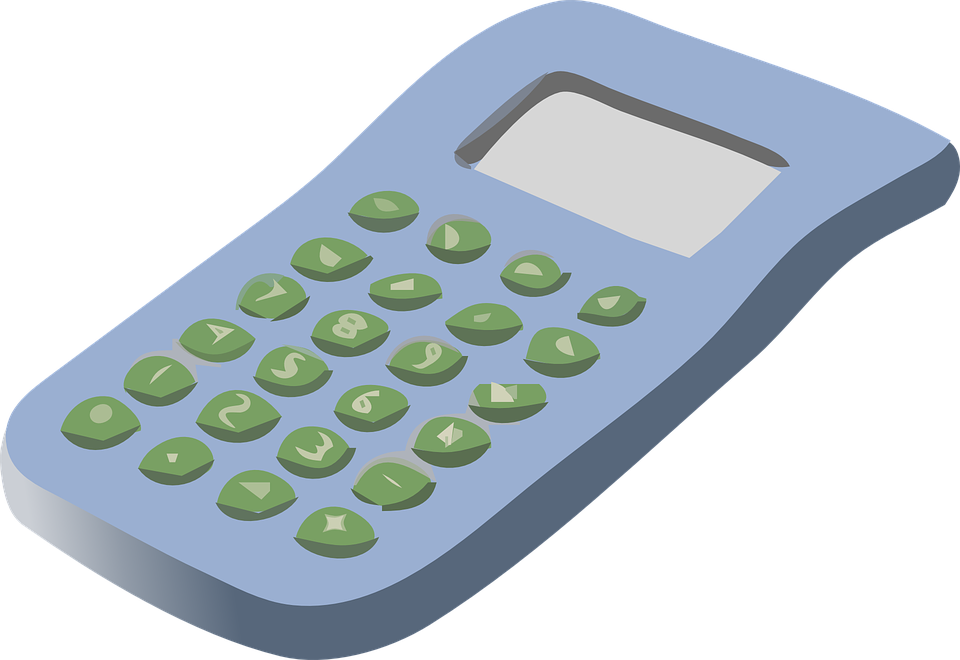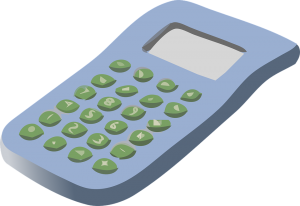
What are Batch Invoices? And How Do I Print Them?
 You can often measure the success of a small business by determining how many customers it has. Regardless of niche or industry, customers translates into sales, and sales translates into revenue. But if you have a substantial amount of customers, you may also find yourself printing dozens or even hundreds of invoices.
You can often measure the success of a small business by determining how many customers it has. Regardless of niche or industry, customers translates into sales, and sales translates into revenue. But if you have a substantial amount of customers, you may also find yourself printing dozens or even hundreds of invoices.
Granted, not all businesses use invoices. Retain stores, for instance, typically collect payment for a product at the same time when it’s sold to a customer. Therefore, there’s really no need for invoices. Business-to-business (B2B) companies, on the other hand, often use invoices to collect payment after a product or service has been sold. The customer is sold the product or service, after which he receives an invoice for payment.
Assuming you only have a few customers to whom you invoice, you can probably print them separately without it affecting your productivity. If you need to print dozens or hundreds of invoices, however, you should consider printing them all at once. Thankfully, this is a feature found in Quickbooks. Known as “batch invoices,” it allows business owners and accountants to print two or more invoices simultaneously. While you can always opt to print your invoices individually, batch invoices can save you a substantial amount of time and work.
To use batch invoices, log in to your Quickbooks account and click Transactions > Sales > Invoices. Next, choose ” All Statuses” for the status field and “To be printed” for the delivery field. You can then select the dates for the invoices you want to print as well as the customer. When you are finished, click “Apply,” followed by “Batch” and “Print Transactions.” Quickbooks will then load your invoices in PDF format, at which point you can click the “Print” icon to being printing. Congratulations, you’ve just printed batch invoices in Quickbooks! The next time you need to print multiple invoices, repeat these steps with the appropriate customer or customers.
Of course, you should closely monitor which customers have paid their invoices and which ones haven’t. One of the hurdles of using invoices is the potential for nonpayment. Until a customer has paid, the invoice should be placed into accounts receivables. This means you are waiting to receive payment for the invoice. After the customer has paid, however, you can move that invoice out of accounts receivables.
Have anything else you’d like to add? Let us know in the comments section below!

What is Owner’s Equity in Business Accounting?
 Equity can several meaning, one of which is the capital stock of a company. However, it may also refer to the difference between the assets and liabilities owed. Known as “owner’s equity,” it’s a common element used in business accounting. In fact, it’s one of the four primary types of financial statements, attesting to its importance. To learn more about owner’s equity and how it works, keep reading.
Equity can several meaning, one of which is the capital stock of a company. However, it may also refer to the difference between the assets and liabilities owed. Known as “owner’s equity,” it’s a common element used in business accounting. In fact, it’s one of the four primary types of financial statements, attesting to its importance. To learn more about owner’s equity and how it works, keep reading.
Owner’s equity — when used in the context of business accounting — is the net assets of a business. To calculate net assets, you must subtract your total liabilities from your total assets. If you own $50,000 in assets and have $20,000 in liabilities, for instance, your net assets and owner’s equity is approximately $30,000. Of course, this is just a basic example of owner’s equity. Most business owners will have deeper and more complex calculations.
Some people assume that assets only refers to cash. While cash can certainly be an asset, there are other types of assets — and all of these assets are used to calculate owner’s equity. Assets may consist of both tangible and intangible assets, for instance. See below for a list of common business assets.
Here’s a short list of some of the most common types of assets owned by a business:
- Common stock
- Preferred stock
- Retained earnings
- Brand names
- Copyrights
- Goodwill
- Equipment
- Machines
- Cash
- Real estate
- Reserve
- Treasury stock
It’s important to note that the book value of equity may change in certain circumstances. Issuing new equity, for instance, may increase equity for shareholders. Dividends paid to preferred stock are considered an expense and therefore must be subtracted from net income, which can also change the book value of equity.
Hopefully, this gives you a better understanding of owner’s equity in business accounting. To recap, it’s the net assets of a business. Owner’s equity is calculated by subtracting total liabilities from total assets. And as you can see from the information above, there are many types of assets, including both tangible and intangible assets. All business owners should closely monitor their owner’s equity to better determine the overall financial health of their organization. When owner’s equity begins to drop or even goes negative, it’s usually a sign of poor financial health, in which case changes should be made to reverse the trend.
Have anything else you’d like to add? Let us know in the comments section below!

How to Reconcile Credit Card Accounts in Quickbooks
 Reconciliation is arguably one of the most important steps in financial accounting. In a perfect world, all of your transactions in your books would align with those listed in your credit card statements. But errors are bound to happen, which is why it’s a good idea to reconcile your accounts. Thankfully, Quickbooks makes reconciliation a breeze. To learn more about how to reconcile your credit card accounts in Quickbooks, keep reading.
Reconciliation is arguably one of the most important steps in financial accounting. In a perfect world, all of your transactions in your books would align with those listed in your credit card statements. But errors are bound to happen, which is why it’s a good idea to reconcile your accounts. Thankfully, Quickbooks makes reconciliation a breeze. To learn more about how to reconcile your credit card accounts in Quickbooks, keep reading.
Discrepancies occur when the financial transactions in your Quickbooks account don’t match those listed in the associated financial account. While this post focuses specifically on credit card account dependencies, they can occur to all financial accounts, including bank accounts. Therefore, it’s important for business owners to regularly reconcile all of their financial accounts.
Create a Backup of Your Company File
As with any reconciliation process, you should back up your Quickbooks company file beforehand. This way you’ll have a copy of your original account before any changes were made.
Set Up Credit Card Accounts
Assuming you haven’t done so already, you’ll also need to set up your credit card accounts in Quickbooks. Double-check to ensure the starting balance is correct before proceeding.
Steps to Reconciling Credit Card Accounts
Once you’ve created a backup copy of your Quickbooks company file and added your credit card accounts to Quickbooks, you can begin the reconciliation process. From the main screen, select the gear icon and choose “Reconcile.” This will bring up the “Begin Reconciliation” Window containing various field like account, statement date, beginning balance, ending balance and more. In the account field, enter the credit card account that you want to reconcile. Keep in mind that you’ll only see accounts linked to Quickbooks. Therefore, you need to add your credit card account to Quickbooks if you haven’t already done so. The beginning balance field should automatically be filled in as Quickbooks pulls this data from the account.
When you are ready to begin the process, click “Locate Discrepancies,” at which point Quickbooks will cross-reference your Quickbooks account with your credit card to account while searching for discrepancies. After the process has been complete, you’ll have the option to undo and restart the process on the “Locate Discrepancies” window. If you are troubleshooting a problem, you may want to click the “Undo Last Reconciliation” button.
Have anything else you’d like to add? Let us know in the comments section below!

What is a Contra Account in Accounting?
 You’ve probably heard of a general ledger account, but have you heard of a contra account? Well, a contra account is essentially a type of general ledger account. However, it has a few unique characteristics worth noting. To learn more about contra accounts and how they are used, keep reading.
You’ve probably heard of a general ledger account, but have you heard of a contra account? Well, a contra account is essentially a type of general ledger account. However, it has a few unique characteristics worth noting. To learn more about contra accounts and how they are used, keep reading.
Contra Accounts: The Basics
As explained by Investopedia, a contra account is a type of general ledger account that’s used specifically for the purpose of reducing an associated account’s balance. In a typical asset account, the balance is negative. In a contra account, however, the balance is positive — and this is the characteristic feature of contra accounts. They have a credit balance instead of a debit balance, allowing them to reduce the paired account’s total balance.
How Contra Accounts are Used
Contra accounts are used in a variety of applications, one of which is for uncollectible accounts. In the same Investopedia article cited above, it explains that contra accounts can be added to an accounts receivable. The balance is used to represent the total amount that’s expected to go uncollected; thus, reducing the amount of revenue reported in accounts receivables. In a perfect world, business owners would always receive payment for the products and services they sell. However, there are times when a customer may not pay, which is where contra accounts come into play. Using a contra account, you can record nonpayments so they don’t adversely affect your accounts receivables.
Another example of a contra account is an accumulated depreciation account. This type of account is used to offset the fixed assets account. While the fixed asset account has the cost of acquisition, the contra account reflects the total cost of all depreciation expenses that have incurred against the respective assets over time. Business owners and accounts typically look at both the contra account and accumulated depreciation account to determine the net dollar value of the assets.
There’s also a contra liability account, which is somewhat confusing given that it’s not an actual liability account. Rather, a contra liability account is used to offset a payable account. A bond discount account, for instance, is a type of contra liability account. When a bond discount account is added to a contra liability account, it reveals the carrying value of the respective bond. Hopefully, this gives you a better understanding of contra liability accounts.
Have anything else you’d like to add? Let us know in the comments section below!

How to Set Up Recurring Invoices in Quickbooks
 It’s not uncommon for businesses to send the same invoice to the same customer on a regular basis. If you’re a florist, for instance, maybe you have a client who buys a dozen roses every week. Well, instead of manually creating and sending the customer the same invoice every week, you should consider setting up recurring invoices. With Quickbooks, recurring invoices such as this are a breeze. To learn more about recurring invoices and how to use them in Quickbooks, keep reading.
It’s not uncommon for businesses to send the same invoice to the same customer on a regular basis. If you’re a florist, for instance, maybe you have a client who buys a dozen roses every week. Well, instead of manually creating and sending the customer the same invoice every week, you should consider setting up recurring invoices. With Quickbooks, recurring invoices such as this are a breeze. To learn more about recurring invoices and how to use them in Quickbooks, keep reading.
Before we begin, it’s important to note that recurring invoices is only available in Quickbooks Essentials and Quickbooks Plus. If you use a different version of Quickbooks, you’ll need to upgrade to utilize this feature.
To set up recurring invoices, log in to your Quickbooks Essentials or Quickbooks Plus account. From here, select the gear icon > Recurring Transactions > New. When it asks you for the transaction type, choose “Invoice” and click “OK.” For the type of invoice, choose “Scheduled.” You can then select “Automatically send emails” to set up the recurring invoices. Fill out the rest of the form, and when you are finished, click “Save template,” at which point your invoice will be saved for future use.
It’s also a good idea to set up your recurring invoices to automatically carbon copy (CC) your own email address. Basically, this means you’ll receive a copy of the invoice whenever you send a customer an invoice. This doesn’t have any effect on the invoice itself; it only serves as a confirmation, indicating that your invoice was sent. If you want to enable this feature, select the gear icon > Company Settings > Sales > Messages > Email me a copy.
Additionally, you can run a report of all automatic invoices sent to customers in Quickbooks. This is done by clicking “Reports” in the left-hand menu > Go to Reports > Recent Automatic Transactions > Customize > Rows/Columns. From here, select the customer for “Group by,” followed by “Run Report.” Quickbooks will run a report of all automatic transactions for the respective customer. If you want to save the report, you can do so by clicking “Save Customizations.” Quickbooks also allows users to print and email these reports.
Following the steps outlined here will allow you to set up recurring invoices in Quickbooks. As stated above, however, this feature is only available in Quickbooks Essentials and Quickbooks Plus.
Did this tutorial work for you? Let us know in the comments section below!

How to Record ACH Payments in Quickbooks
 Quickbooks Payments supports a variety of payment methods. Using Intuit’s internal payment system, business owners can accept credit card payments, debit card payments even ACH payments. While most customers prefer paying for products and services using either a credit or debit card, some choose ACH. As a business owner, there’s an added benefit to accepting ACH payments: lower fees. At 50 cents per transaction, ACH payments are cheaper to process. But if you plan on accepting ACH payments, you’ll need to know how to record them in your Quicbooks account.
Quickbooks Payments supports a variety of payment methods. Using Intuit’s internal payment system, business owners can accept credit card payments, debit card payments even ACH payments. While most customers prefer paying for products and services using either a credit or debit card, some choose ACH. As a business owner, there’s an added benefit to accepting ACH payments: lower fees. At 50 cents per transaction, ACH payments are cheaper to process. But if you plan on accepting ACH payments, you’ll need to know how to record them in your Quicbooks account.
To record ACH payments in Quickbooks, you’ll need to first sign up for Quickbooks Payments. You can learn more about Quickbooks Payments by clicking this link. Intuit offers Quickbooks Payments for both the desktop and cloud versions of its accounting software. However, the fees for accepting ACH payments on Quickbooks Desktop is less than Quickbooks Online, assuming you choose the monthly plan.
After signing up for Quickbooks Payments, log in to your account and create a sales receipt for the payment you’ve received. Next, select ACH as the payment method, followed by entering the customer’s bank information. You will then need to get authorization from the customer, at which point you can process the transfer.
To enter the customer’s bank account information, you’ll need to click the “Enter bank info” option. From here, you can enter the customer’s bank name, account number, phone number and name. You may notice an option for “Use this account information in the future.” When this option is enabled, it will store the customer’s bank information in an secure, encrypted file. Assuming you receive regular payments from this customer, it’s a good idea to enable this option. If you don’t enable it, however, you’ll need to process the ACH payment within 10 minutes; otherwise, the customer’s information will be erased and you’ll have to reenter it.
Of course, you’ll also need to get authorization from the customer to process his or her ACH payment. This is done by clicking a text link at the top to open the authorization form. From here, click the box saying “I have signed authorization from my customer or will read the authorization script.” Click “save” and then “send” to complete the authorization process. You should then receive a receipt confirming the payment and indicating the ACH process was initiated correctly.
Did this tutorial work for you? Let us know in the comments section below!

Accounting Best Practices for Small Business Owners
 Running a successful small business is no easy task. According to the Small Business Administration (SBA), there are nearly 28 million small businesses with fewer than 499 employees operating in the United States. Unfortunately, more than half of these small businesses will close within their first five years. Whether you currently own a small business or are thinking of launching one, you should follow the accounting tips listed below to increase your chances of success.
Running a successful small business is no easy task. According to the Small Business Administration (SBA), there are nearly 28 million small businesses with fewer than 499 employees operating in the United States. Unfortunately, more than half of these small businesses will close within their first five years. Whether you currently own a small business or are thinking of launching one, you should follow the accounting tips listed below to increase your chances of success.
Separate Personal and Business Expenses
One of the most common accounting mistakes made by small business owners is mixing together personal and business expenses. While paying for a business-related expense using your personal credit card may seem harmless enough, it can make it difficult to prepare and file your taxes. To simply your taxes, it’s recommended that you separate your personal and businesses expenses, using only business accounts to pay for business-related expenses.
Leave a Paper Trail
In addition to separating your personal and business expenses, you should also leave a paper trail. In other words, avoid using cash to pay for business expenses, and instead use a credit card, debit card or check. Granted, it’s not illegal to pay for business expenses using cash. The problem with cash is that it doesn’t offer an easily accessible record. You may obtain a receipt, but you won’t be able to download or access records of your cash transactions. On the other hand, using a credit card, debit card or check to make purchases creates a digital record, which you can later access if needed.
Accounting Software
Some business owners assume that accounting software isn’t necessary. If they only perform a few transactions per week, for instance, a small business owner may use Microsoft Excel to keep track of their income and expenses. In doing so, however, they set up themselves up for failure. Regardless of how many transactions your business performs, using the right accounting software will certainly help. Quickbooks is a versatile, easy-to-use accounting solution that allows you to keep track of inventory, expenses, income and more. Most small business owners and professional accountants will agree that it’s well worth the investment.
Pursue Accounts Receivables
Assuming your small business sells a service — and you allow customers to pay after the service has been completed — you should follow up on accounts receivables to collect money due. Overlooking accounts receivables could result in a substantial loss of income.
Have anything else you’d like to add? Let us know in the comments section below!

Common Questions and Answers About Quickbooks
 Whether you currently use Quickbooks or are thinking about using it, you may have some questions. So, in an effort to help business owners and accounts better understand this software, we’re going to reveal some of the most common questions and answers about Quickbooks.
Whether you currently use Quickbooks or are thinking about using it, you may have some questions. So, in an effort to help business owners and accounts better understand this software, we’re going to reveal some of the most common questions and answers about Quickbooks.
What are Classes?
Classes are used in Quickbooks to track transactions. If you have multiple departments or locations, for instance, you can set up a class for each one; thus, allowing you to pull data from each specific department or location. You can enable class tracking in Quickbooks by accessing Edit > Preferences > Accounting > Company Preferences.
What’s the Difference Between Desktop Quickbooks and Quickbooks Online?
There are several different versions of Quickbooks, all of which fall under the category of either Desktop or Online. Desktop Quickbooks is hosted locally on your own computer, whereas Quickbooks Online is hosted remotely on the cloud. Features and specifications vary between these two types, so it’s important to familiarize yourself with each one before making a final decision.
What is Hosted Quickbooks?
A third type of Quickbooks is Hosted Quickbooks. Technically, however, this is the same as Desktop Quickbooks; the only difference is that it’s hosted by an authorized third-party vendor. Many business owners and accountants prefer Hosted Quickbooks because it offers the best of both worlds. It has all of the features of Desktop Quickbooks, but it’s hosted on a remote server, allowing you to access it anywhere, anytime.
What is a Company File?
Featuring the extension .QBW, company files are used to store all of your Quickbooks account data. If you want to transfer Quickbooks to a new computer, for instance, you’ll need to make a copy of this file.
What is Multi-User Mode?
Certain versions of Quickbooks support multi-user mode, which as the name suggests, allows multiple users to collaborate on the same account. If you’re a business owner, for instance, you may want to set up multi-user mode so that your accountant can also access your company file. For multi-user mode to work, each user must have their own Quickbooks license.
What is a Credit Memo?
In Quickbooks, credit memos are used to make a note of a credit issued to a customer. If a customer returns a product, for instance, you may issue his or her credit. Assuming you’ve already recorded the invoice, you should issue create a credit memo so it’s properly recorded in your Quickbooks account.
Have any other questions about Quickbooks? Let us know in the comments section below!

Assets vs Liabilities: What’s the Difference?
 In financial accounting, you’ll come across the terms “assets” and “liabilities” quite frequently. While you may have a general understanding of these terms, you probably don’t know the complete details. So, if you’re interested in learning more about assets and liabilities — and how they differ from one another — keep reading.
In financial accounting, you’ll come across the terms “assets” and “liabilities” quite frequently. While you may have a general understanding of these terms, you probably don’t know the complete details. So, if you’re interested in learning more about assets and liabilities — and how they differ from one another — keep reading.
The Basics of Assets vs Liabilities
In the most basic sense, a liability is any financial sacrifice that a business is contractually obligated to make, whereas an asset is a financial resource of monetary value.
Exploring Assets
An asset is essentially any tangible or intangible “thing” that can be converted into real money. The International Accounting Standards Board further explains that assets are “resources controlled by the entity as a result of past events and from which future economic benefits are expected to flow to the entity.” Common examples of assets include cash, deposit accounts, accounts receivables, inventory, machines/equipment and prepaid expenses. However, long-term investments may also fall under the category of assets, including bonds, stock, property, sinking funds and pension funds. The defining characteristic of an asset is that it holds monetary value.
Exploring Liabilities
On the other hand, a liability is money owned by a business. When a business borrows money, it takes on debt liability. The business acquires short-term capital, though it’s contractually obligated to pay back that debt, usually with interest to the respective lender.
Calculating liabilities is essential in determining a business’s total assets. On a typical balance sheet, for instance, the formula liabilities + owner’s equity is used to calculate the business’s total assets.
However, there are two different types of liabilities that are reported on a balance sheet: current liabilities and long-term liabilities. Current liabilities are those which are expected to be liquidated within a year. Common examples of current liabilities include wages, taxes and accounts payables. Long-term liabilities, however, are those which are expected to be liquidated after a year. Examples of long-term liabilities include notes payables, long-term bonds, product warranties, leases and penion obligations.
It’s important to note that a debit can either increase or decrease the total amount of a liability. When a business deposits cash into a bank account, the bank debits an asset and credits a liability. When a business withdraws money from a bank account, the opposite happens.
Have anything else you’d like to add? Let us know in the comments section below!
How to Handle a Refund from a Vendor In Quickbooks
 There’s an old saying that you have to spend money to make money. Well, this holds true in today’s world. If you own or otherwise operate a small business, you probably have vendors from whom you purchase products and services. Retail stores, for instance, purchase their inventory from vendors; restaurants also buy their food and ingredients from vendors. But what happens if a vendor offers you a refund?
There’s an old saying that you have to spend money to make money. Well, this holds true in today’s world. If you own or otherwise operate a small business, you probably have vendors from whom you purchase products and services. Retail stores, for instance, purchase their inventory from vendors; restaurants also buy their food and ingredients from vendors. But what happens if a vendor offers you a refund?
There are times when a vendor may offer a refund. If you accidentally overpaid, for instance, the vendor may issue a refund for the difference. Regardless of why the vendor offered a refund, it’s important to record this transaction in your Quickbooks accounting software. Thankfully, it’s a quick and easy process that should only take a few minutes to complete.
To enter a refund from a vendor, log in to your Quickbooks account and choose Banking > Make Deposit. Under the “Received From” menu, select the vendor who is issuing the refund. Assuming you’ve done business with this vendor before, he or she will be listed here. If you haven’t done business with the vendor, however, you’ll need to set up a new account for them.
After selecting the vendor under the “Received From” menu, go to the “From Accounts” section and choose “Accounts Payable.” Here, you can enter the amount of the refund in the “Amount” field. If the vendor is issuing a refund for $300, for instance, enter $300 in this field. Double-check to make sure the amount listed reflects the actual refund amount issued by the vendor. When you are finished, click “Save & Close” to complete the changes.
Keep in mind, however, that this only works for Quickbooks Desktop (or Hosted Quickbooks). If you use the cloud-based version of Quickbooks, you’ll need to handle vendor refunds in a different way. This involves logging in to your Quickbooks Online account, creating a credit in the vendor’s profile, post deposit, choose the vendor and use Accounts Payable as account. Next, click the “+” button, followed by “Check” under vendor. From here, you can add credit previously entered.
Not every small business owner will enter circumstances requiring them to handle vendor refunds. If you always pay the correct amount to vendors, they shouldn’t issue a refund. Nonetheless, it’s a good idea to familiarize yourself with the process of recording such refunds just in case. Because when it happens, you’ll need to record the refund to keep your books in order.
Did this tutorial work for you? Let us know in the comments section below!
